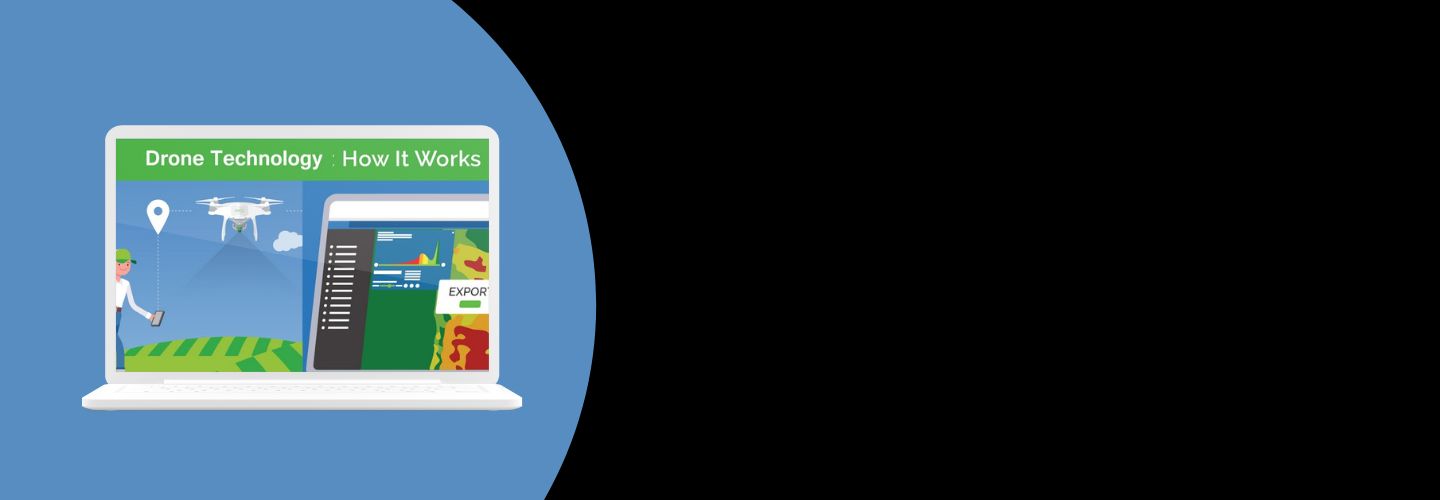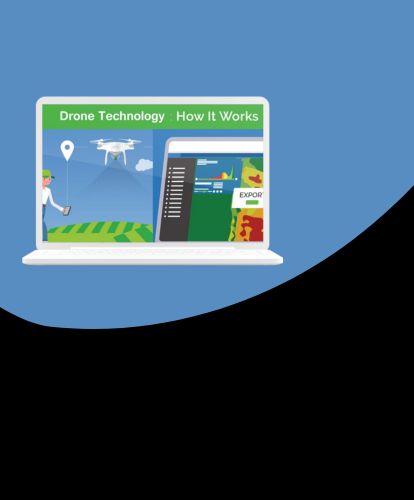How Do Drones Work and What is Drone Technology?
Drones have become increasingly popular in recent years, revolutionizing various industries and capturing the imagination of people worldwide. These unmanned aerial vehicles (UAVs) are not only fascinating gadgets but also powerful tools with diverse applications. In this article, we will delve into the workings of drones and explore the underlying drone technology.
1. Introduction
In today's technological era, drones have emerged as versatile devices that can be remotely controlled or autonomously programmed to perform a wide range of tasks. From aerial photography to delivery services, drones have proven to be valuable assets in different domains. Understanding how drones work and the technology behind them is crucial to fully appreciate their capabilities.
2. What is a Drone?
A drone, also known as an unmanned aerial vehicle (UAV), is an aircraft without a human pilot aboard. Drones can be remotely operated or fly autonomously based on pre-programmed flight plans or intelligent algorithms. They are equipped with various sensors, cameras, and systems to gather information, navigate, and perform specific tasks.
2.1 Types of Drones
There are several types of drones available today, each designed for specific purposes. Some common types include:
- Quadcopters: These drones have four rotors and are highly maneuverable, making them popular for recreational and professional uses.
- Fixed-Wing Drones: These drones resemble aeroplanes and are efficient for long-range missions or mapping large areas.
- Multi-Rotor Drones: These drones have more than four rotors and are often used for industrial applications like inspection or surveillance.
- Hybrid Drones: These drones combine features of both fixed-wing and multi-rotor drones, providing flexibility in various scenarios.
3. Drone Technology
To comprehend the functioning of drones, it is important to understand the underlying technology and components involved.
3.1 Components of a Drone
A drone consists of several essential components:
- Frame: The physical structure that holds all the components together.
- Flight Controller: The brain of the drone, responsible for controlling its movement and stability.
- Motors and Propellers: Generate the necessary thrust and lift for flight.
- Battery: Provides power to the drone and its electronic systems.
- Sensors: Enable the drone to perceive its environments, such as accelerometers, gyroscopes, and GPS.
- Cameras and Payloads: Capture images, and videos, or carry specialized equipment for specific tasks.
3.2 Flight Control Systems
Drone flight control systems are responsible for maintaining stability and controlling the drone's movements. They employ various sensors and algorithms to interpret data and adjust the drone's position and orientation in real-time. This allows drones to hover in one place, follow a designated path, or perform complex aerial maneuvers.
3.3 Sensors and Cameras
Sensors play a vital role in drone technology. Accelerometers, gyroscopes, and magnetometers provide information about the drone's position, orientation, and movement. GPS receivers enable accurate navigation and positioning. Additionally, cameras and specialized payloads allow drones to capture high-resolution images, and videos, and collect data for specific applications.
4. How Do Drones Work?
The operation of drones involves several interconnected processes, enabling them to fly and perform various tasks.
4.1 Power and Propulsion
Drones are powered by batteries that supply electricity to the motors. These motors, coupled with propellers, generate thrust and lift, allowing the drone to achieve controlled flight. The size and number of motors and propellers vary depending on the type and purpose of the drone.
4.2 Flight Control
Flight control systems ensure stability and manoeuvrability. They receive inputs from the pilot or autonomous algorithms and adjust the drone's speed, altitude, and direction accordingly. These systems make constant adjustments to keep the drone stable, compensating for external factors such as wind.
4.3 Navigation
Drones rely on GPS or other navigation systems to determine their position and navigate accurately. The GPS data combined with onboard sensors assist in maintaining a stable flight and executing pre-programmed missions. Advanced drones can use obstacle detection and avoidance systems to prevent collisions during autonomous flights.
4.4 Payload and Data Transmission
Drones can carry various payloads, including cameras, sensors, or specialized equipment. The captured data is transmitted to the operator or stored onboard for later analysis. This data transmission may occur through Wi-Fi, radio waves, or cellular networks, depending on the drone's capabilities and range.
5. Applications of Drones
The versatility of drones has led to their adoption across numerous industries and applications.
5.1 Photography and Videography
Drones equipped with high-resolution cameras have revolutionized aerial photography and videography. They offer unique perspectives, capturing stunning imagery from vantage points that were previously inaccessible. From weddings to outdoor adventures, drones have become an invaluable tool for visual storytelling.
5.2 Agriculture
In the agricultural sector, drones have proven instrumental in optimizing crop management and monitoring. Equipped with multispectral cameras, drones can capture images that reveal crop health, detect irrigation issues, or identify pest infestations. This data assists farmers in making informed decisions, resulting in improved yields and reduced resource usage.
5.3 Delivery and Logistics
The concept of using drones for delivery purposes has gained significant attention. Companies are exploring the feasibility of drone delivery services to transport small packages quickly and efficiently. Drones can navigate congested urban areas, avoiding traffic and providing swift deliveries for urgent items.
5.4 Search and Rescue
Drones equipped with thermal cameras and other sensors have proven invaluable in search and rescue operations. They can cover large areas quickly, provide aerial views in real-time, and assist in locating missing persons or assessing dangerous situations. Drones enhance the efficiency and safety of rescue missions, potentially saving lives.
6. Advantages and Challenges
While drone technology offers numerous advantages, it also comes with certain challenges and concerns.
6.1 Advantages of Drone Technology
- Increased efficiency and cost-effectiveness in various industries.
- Enhanced safety by allowing drones to access hazardous or inaccessible locations.
- Time-saving capabilities through automation and autonomous flights.
- Environmental benefits by reducing the need for manned flights and optimizing resource usage.
6.2 Challenges and Concerns
- Regulatory hurdles and legal limitations regarding drone operations.
- Privacy concerns related to the collection of data and surveillance capabilities.
- Potential risks of accidents or collisions with other aircraft or infrastructure.
- Security vulnerabilities, such as the misuse of drones for illicit activities.
7. Future of Drones
The future of drones holds significant potential and is expected to witness exciting advancements and widespread adoption in various industries. Here are some key aspects shaping the future of drones:
- Advanced Technology: Drones will continue to benefit from advancements in technology, including improved sensors, longer-lasting batteries, and more efficient propulsion systems. This will lead to increased flight times, higher payload capacities, and enhanced capabilities.
- Automation and Artificial Intelligence: Drones will become more intelligent and autonomous, thanks to advancements in artificial intelligence (AI). They will be equipped with sophisticated algorithms, enabling them to perform complex tasks with minimal human intervention. This will lead to increased automation in various industries, such as agriculture, delivery services, surveillance, and infrastructure inspections.
- Expanded Applications: Drones will find applications in numerous industries beyond their current uses. In agriculture, they will assist in crop monitoring, spraying pesticides, and assessing soil conditions. In the construction industry, drones will be used for surveying, mapping, and monitoring construction sites. Additionally, they will be employed for disaster management, search and rescue operations, wildlife conservation, and environmental monitoring.
- Urban Air Mobility (UAM): The concept of UAM envisions the use of drones and other aerial vehicles for urban transportation, reducing congestion and providing efficient transportation solutions. Electric-powered passenger drones, also known as air taxis, are being developed and tested by various companies worldwide. In the future, UAM systems could revolutionize the way people commute within cities.
- Enhanced Safety Features: Safety will remain a paramount concern. Future drones will incorporate advanced collision avoidance systems, reliable communication protocols, and improved fail-safe mechanisms. These features will ensure safer operations and enable drones to operate in complex environments, including urban areas.
- Regulatory Framework: As drone technology evolves, regulatory bodies will continue to refine and update regulations to ensure safe and responsible drone operations. Governments worldwide are working on establishing comprehensive guidelines for drone usage, including airspace management, privacy protection, and pilot certification requirements.
- Environmental Impact: With the increased adoption of electric-powered drones, the environmental impact of drone operations will be significantly reduced. Electric propulsion systems will lead to lower carbon emissions and reduced noise pollution compared to traditional fuel-powered drones.
- Connectivity and Communication: Drones will benefit from improved connectivity through the deployment of 5G networks and satellite communication systems. This enhanced connectivity will enable real-time data transmission, remote control, and efficient communication between drones and ground stations, facilitating a wide range of applications.
Overall, the future of drones holds immense promise. With ongoing technological advancements and expanded applications, drones are set to play a vital role in various industries, transforming the way we approach tasks such as transportation, monitoring, and delivery services.
8. Conclusion
Drones have revolutionized various industries and continue to evolve with advancements in technology. Understanding how drones work and the underlying technology helps us appreciate their capabilities and potential applications. From aerial photography to search and rescue missions, drones have opened up new possibilities and transformed the way we interact with the world. As drone technology progresses, addressing the associated challenges and concerns will be crucial for their responsible and beneficial integration into society.
FAQs
- Can anyone fly a drone?
While anyone can fly a drone, certain regulations and guidelines must be followed, depending on your location. It is important to familiarize yourself with the local drone laws and obtain any necessary licenses or certifications.
- Are drones only used for recreational purposes?
No, drones have a wide range of applications beyond recreational use. They are utilized in industries such as photography, agriculture, delivery services, and search and rescue operations.
- Are drones capable of flying long distances?
Yes, certain types of drones, such as fixed-wing drones, have the capability to fly long distances. However, the range of a drone depends on various factors, including battery life, payload weight, and weather conditions.
- What safety precautions should be taken while flying a drone?
Safety is crucial when operating a drone. It is important to fly in designated areas, avoid flying near airports or restricted airspace, and maintain visual contact with the drone at all times. Following the manufacturer's instructions and practising responsible flying is essential.
- Can drones be used for surveillance?
Drones can be equipped with cameras and sensors for surveillance purposes. However, it is important to adhere to privacy laws and regulations to ensure the ethical and legal use of drone surveillance capabilities.

